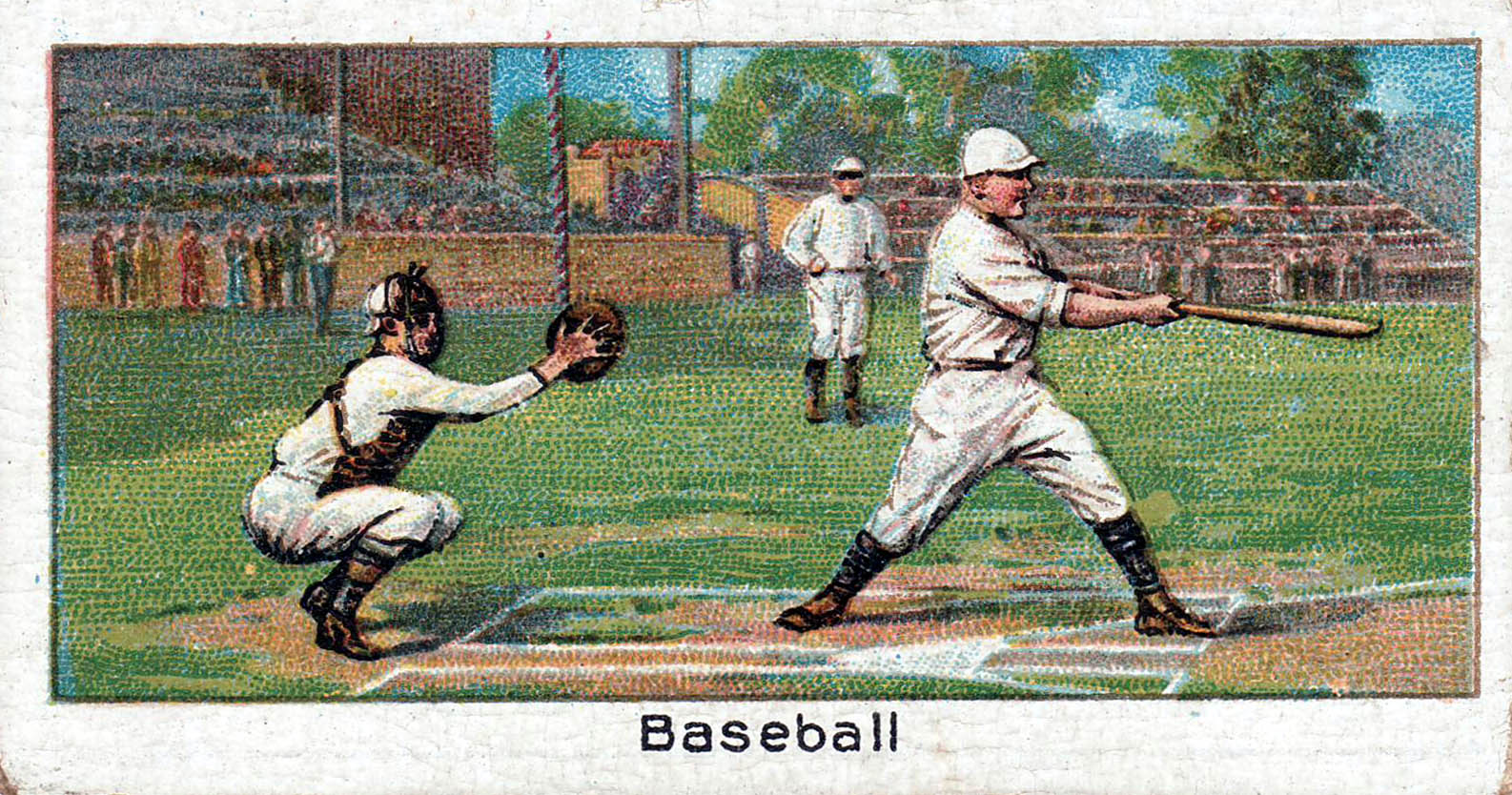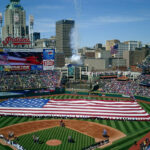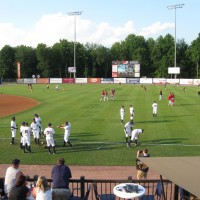The Little League World Series has begun, with teams from all over the world coming to that handsome stadium in Williamsport, Pennsylvania, an hour’s drive from Archbald, the small town where I grew up. My family’s association with the Little League was of long duration, and I’d like to describe some of it here.
When I joined as a skinny nine-year-old, my uncle Bobby was coaching our team, one of six in the league, each with fifteen boys. The town had fewer people then, but far more children, and most of us lived outdoors once the weather got warm. Italian-American kids like me and my cousins were well tanned by the middle of May, and downright dark in July. If you go to Archbald now, you won’t find kids swarming over the streets and the abandoned mine-roads in the woods. In fact, the Archbald Little League has merged with a league in the next town, and some of the towns in our valley now have no Little League at all. Perhaps by compensation, where a league does exist, there’s a lot more for the smaller children, by way of T-ball and such. The fewer children you see playing outdoors on their own, the more of their activities will be sponsored and managed by adults. Call it an inverse rule of childhood independence.
Fifteen boys are a lot for one team, but by rule every kid had to bat at least once and play an inning in the field. We also forbade “recruiting.” You were assigned a team based on where your house was, except in the case of cousins; our league tried to keep families together. My team, Stafursky’s Blacktopping (try to get all that on the front of a uniform), had, over the years, eleven boys from my extended family; the same could be said of other families and teams. If we were playing Foote’s Pharmacy—at that time the oldest family-run pharmacy in the nation, now gone—we were sure to face a few of the McGees and Faliskies, on the Irish side of town. So a rivalry among neighborhoods sprang up, which was all to the good.
Until 1970, we had only one field to play on, and it wasn’t very good. It had a backstop, and some bleachers for the fans, but no dugouts, no infield grass, and no fence in the outfield. It couldn’t, because it was the town’s only ballfield, and the men of our local fast-pitch Mountain League had to use it too, and you couldn’t have a Little League fence for them or infield grass, because their bases were 90 feet apart rather than 60. Our makeshift was to chalk a line in the outfield, and anything that passed it on the fly was a home run, while anything that passed it on the ground was a double. Not good baseball, but there was nothing else to be done.
That field on Laurel Street was in the middle of an old neighborhood, so the people who lived nearby would hear the sing-song of the boys in the field as they encouraged their pitcher to “fire one in there,” and then the cheers for a nice catch in the field or a double smacked down the line. Parents and siblings showed up to watch the games, often leaning against the chain-link fence that bounded the field, chatting about this and that. In my early years, we didn’t even have paid umpires; we took volunteers, usually a man behind home plate and a teenage boy out in the field. You never wanted your father to be an umpire, because then all the close calls would go against you; that’s one of the things learned in that mysterious School for Fathers that has no walls and no curriculum, but is to be found everywhere and in all ages.
Little League then was only for boys, and that was right. The girls didn’t mind. We did have, for a while, a Miss-E Softball League, but it soon folded. Still, why not have those early-growing tomboy-girls play baseball with the boys? People had an instinctive sense that it wasn’t fitting. The result was that you had many more boys playing than otherwise, because the less athletic or the more slowly maturing among them didn’t have to sweat out competition against girls, and this helped them define themselves as boys, giving them a good experience of boyish camaraderie and teamwork.
In my first couple of years as a player, we didn’t have a concession stand at the park, so after our games Uncle Bobby took the team to a small grocery and candy store across the street from where he lived, for pretzels and soda. It was nearing the end for such stores as Joe’s, run from a corner of his house. For such a place to continue, you have to have low taxes, a lot of children about, and plenty of wives home during the day to send them there for a loaf of bread, a dozen eggs, and a carton of milk. When we were done with our post-game treat, it would be a little after 8 PM (our games started at 6 PM sharp, with batting practice and fielding practice beginning at 5 PM, a half hour for each team). I have no memories of any parent picking up one of the boys in a car. We took it for granted that you would just walk or ride your bike home, and that was all.
The Archbald Little League didn’t compete well against the other leagues, in part because the organization wouldn’t let us host an All-Star game on our sandlot, and in part because the head of our league, a soft-spoken elderly gentleman named Ambrose Munley, thought less about competition than about fun. At the time when I joined, we played only a 15-game schedule, three games against each of the five other teams, with the season divided into a first half with eight games and a second half with seven, and Mr. Munley and the other coaches chose all-stars from among the 12-year-olds only, so as to give as many boys as possible one chance to make the team. Uncle Bobby, and my father, who succeeded him as our coach, got the others to agree on a 20-game schedule, and to allow 11-year-olds to play on the All-Star team, making us a little more competitive, but of course reducing the slots available.
Eventually, the Archbald Athletic Club, whose Little League team was perennially one of the two best teams in the league, along with ours, built two ball fields on an escarpment on the other side of the river, overlooking the old part of town. One of them was a double-field, with a backstop and a softball infield on one corner, and a backstop and a full baseball infield on the opposite corner, 400 feet away, so that it could be used for both softball and regular baseball. The other was a Little League field, with a real fence and signs advertising local businesses, and a large concession stand, and dugouts, and good-sized bleachers on both sides. That was the AC’s home field, and the other teams also used it half the time, while the other half of the games were played on the old sandlot. Boys could get from the sandlot to the new field by crossing a defunct train trestle, taking care not to fall fifty feet into the river below, and making their way through a half mile of woods.
That escarpment, carved by a glacier, had poor soil, meaning that it was covered with blueberry patches, so that people, especially the very old and the very young, would sometimes pick berries before the ballgame started, dumping them into half-gallon pitchers. Those patches now are gone, having been paved over with new streets, though, again, there are hardly any children out and about.
Baseball was the national pastime, and I can still remember that my neighbors the Paones were all Yankee fans, while my brother Mark liked the A’s, my cousin Kenny liked the Mets, and I, two of my cousins, and two of our neighbors liked the Cardinals, and to this day we still hold our old allegiance. But that love for baseball didn’t mean that we organized our lives around the sport, or that any parent with a Little Leaguer had baseball scholarships in mind. It didn’t enter into the picture. A child’s life was not packaged up and dressed for ambition. That meant, too, that the fans did not take things too seriously. Altercations were few. One time when I was an umpire I did have to throw a drunken fan off the premises, under threat of forfeiting the game to the other team; and once, when my father was coaching the teen league, he lost his temper and uttered the only obscenity I ever heard from him in my life, against the father of one of his own players—the boy could hardly hold his head up for embarrassment. Sure, there were well-meaning cat-calls at the umpire now and then, but not many, and the umpires had as much fun as anyone.
My father was a great coach, and the boys loved him. He had a few easy rules to follow. No swimming on the day of a game; it would turn your arms and legs into noodles. Show up for practice on time. No cussing or grouching. If you violated the rules, it was the bench for you, and he didn’t care if you were the team’s best player. The main thing was to do your best and to have fun. And we did have fun.
We have better facilities now, and the Little League World Series is on television. Yet I have not seen a pickup game of baseball or even wiffle ball in thirty years. If I had to choose between one or the other, I’d bid farewell to the Little League, though it now appears to be the only thing that keeps baseball alive for boys in America—alive, perhaps, for better days.
Image credit: via Wikimedia Commons







1 comment
Haley
Thanks for this little jaunt down memory lane. As the mother of two little boys, I often wonder how I will foster in them a sense of independence and resilience in a world where even in a small town, meth addicts roam the street, and homelessness, and poor parenting remain pervasive. My guys are less than 6 years old yet still as they age the thought of letting them roam free to the ball park or the corner store seems like negligence. It wasn’t that way in 1955 or even 1985. But Different times, created by bad policies have influenced clueless parents, I guess. And sports have become a full time job for suburban parents. Small soccer leagues and baseball leagues exists, yet it all feels like a prologue to travel sports or tackle football for 6 year olds (hopefully more and more flag teams for the little guys are cropping up). While we need to foster healthy competition (no more participation trophies), it would be nice to see society place sport where it belong: after faith, marriage and family. Sadly, I don’t think our society will ever make that U turn
Comments are closed.